17 November, 2003
What we did today could best be titled "There might be seals out
there!". The Bell 212 helicopter touched down shortly after 1 pm to
take us across the bay to mainland Antarctica, to search the
shoreline for seal colonies. We headed westward across Erebus Bay,
heading north along the coastline once we reached the far shore. At
last-we were over the continent, instead of gazing wistfully across
the bay at the distant mountains.
As we flew north we passed over a portion of the Dry Valleys, the
site for a wide variety of research projects that are part of the
LTER (Long-Term Ecological Research) Project. To learn more about
the Dry Valleys, you should read TEA Robin Ellwood's journals. Robin
is in the Dry Valleys now, working on a research project.
Tidal cracks were visible along the shoreline, and we landed near
Marble Point to check on a small group of seals. Our mission was to
tag any pups that belonged to tagged females and to re-tag any
females with broken tags. After seeing to the 8 seals that needed
tags, it was time to set foot on the continent and take a short walk
across a rocky bluff. What a monumental moment-we were finally
really on Antarctica instead of just looking across at it. The views
were excellent, in spite of the low-lying clouds. Mountain ranges
rose to the west and in the distance we could see icebergs poking up
through the solid ice-pack.
As we flew over the ice we could see the massive icebergs below,
rising up through the ice and surrounded by piles of blocks that had
broken off their faces. Our pilots used their above-ground radar to
estimate the height of the icebergs. There was a small group of seals
next to one of the bergs, so it was time to touch down once again.
It's hard to describe what it is like to stand on the ice next to an
iceberg towering around 150 feet above our heads. It was sort of
like standing on a sidewalk looking up at a sleek, glass-covered
skyscraper-only much colder and there are seals next to you instead
of pedestrians.
After the iceberg stop, we continued north until we were almost even
with the edge of the ice. The helicopters must stay over the ice and
cannot travel over open water-just in case they are forced to make an
emergency landing. We could see the jagged broken ice along the edge
and as we flew closer we saw a large group of over 100 Emperor
Penguins standing along the ocean. How can you resist landing to
check out penguins?! Our pilots touched down near the penguin group
and we piled out into the howling wind and blowing spindrift. The
Emperor Penguins were as interested in us as we were in them, and
immediately came over to check us out. We were soon surrounded by
the Emperors. It was a photographic frenzy. I found out that it's
really hard to juggle cameras-do I use the digital, my film camera,
or just go with the digital video camera-especially when the cold
winds are howling in from the ocean. When it was time to go the
pilots had to herd the penguins away from the helicopter before we
took off to head back to camp.
Now that we're back at Big Razorback I can look out across the bay
and know just a bit more about what's going on over there.
Daily Haiku:
Looking for more seals
Takes us to the continent
Watch out for icebergs!

The helicopter lands at camp to take us looking for seals.
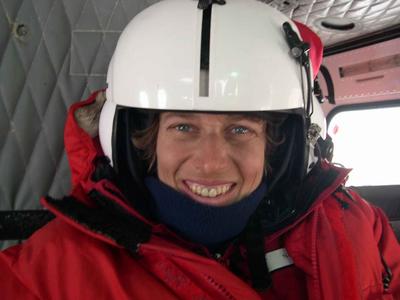
Helmet on, ready to go!
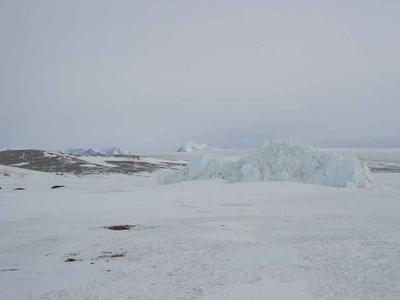
We landed to check on this seal colony. The plan was to tag any pups that belonged to tagged females.
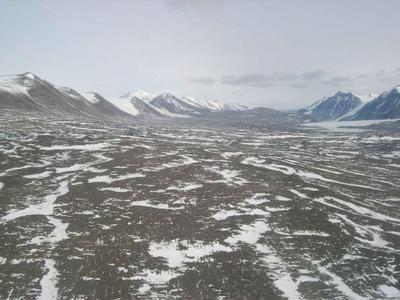
We could look into the Dry Valleys as we flew along the coast.

The pilots had to herd the penguins away from the helicopter before we could take off.
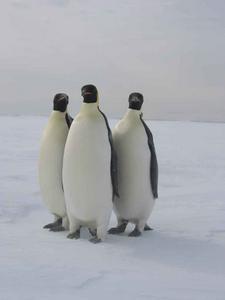
Just a few of the Emperor Penguins we saw.
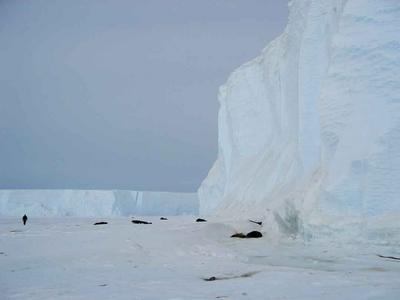
These seals were lounging along an ice crack by the foot of this embedded iceberg.
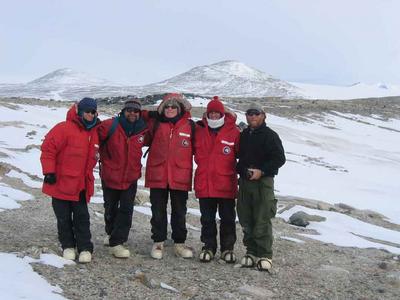
On the continent, at last!!
Contact the TEA in the field at
.
If you cannot connect through your browser, copy the
TEA's e-mail address in the "To:" line of
your favorite e-mail package.
|
